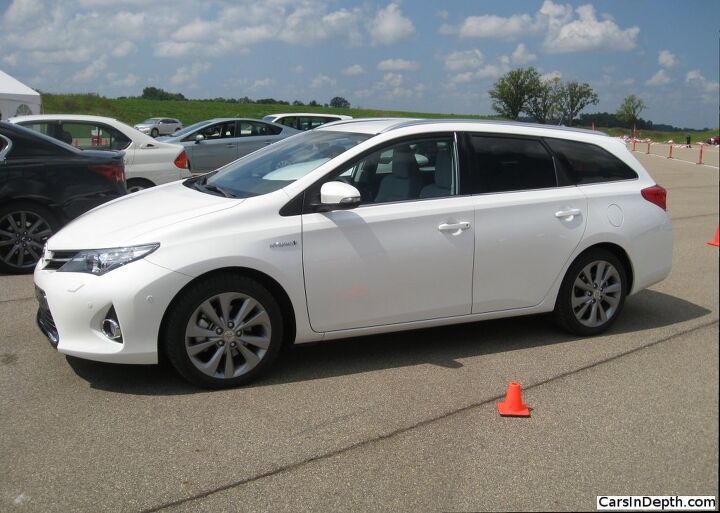#IndependentRearSuspension
Toyota Corolla and Auris Comparo – How Much Difference Does IRS Make?
Auris Touring Sports. Full gallery here.
In a post by our managing editor about that part of the European automotive market referred to as the “C segment”, what Americans would call compact cars, some of our readers commented on how “Toyota Corolla” means different things in different parts of the world. In Europe, Toyota sells a Corolla branded car based on its subcompact platform. The car that Toyota sells in Europe that is most comparable to the North American Corolla is called the Auris there. While built on the same platform, the Auris comes with a multilink independent rear suspension, while the U.S. spec Corolla gets a less sophisticated torsion beam setup in back. At the ride & drive for the launch of the 2014 Corolla that I attended a few months ago I asked Paul Holdridge, vice president of sales for Toyota Division, Toyota Motor Sales, U.S.A, how come Europe gets IRS and we don’t. Holdridge said it had to do with differing driving styles, needs and expectations of American and European consumers. One might thing that means that American drivers don’t care that much about better handling, but it seems to me that the differences between the Auris and the U.S. spec Corolla may have more to do with the expectations of Europeans, than American driving styles.
Curbside Classic: 1963 Tempest LeMans- Pontiac Tries To Build A BMW Before BMW Built Theirs And Almost Succeeds
In the thirties and forties, GM pioneered and brought to market some of the most innovative, successful and lasting new technologies: diesel-electric locomotives, the modern diesel bus, automatic transmissions, refrigeration and air conditioning systems, high compression engines, independent front suspension, and many more. But GM’s technology prowess was just one facet of its endlessly warring multiple personalities. Planned obsolescence, chrome, fins and financial rationalization were the real moneymakers, especially during the technically conservative fifties. But in the period from 1960 to 1966, GM built three production cars that tried to upend the traditional format: the rear engined 1960 Corvair, the front-wheel drive 1966 Toronado, and the 1961 Tempest. And although the Corvair and Toronado tend to get the bulk of the attention, the Tempest’s format was by far the most enduring one: it was a BMW before BMW built theirs. If only they had stuck with it.

















Recent Comments